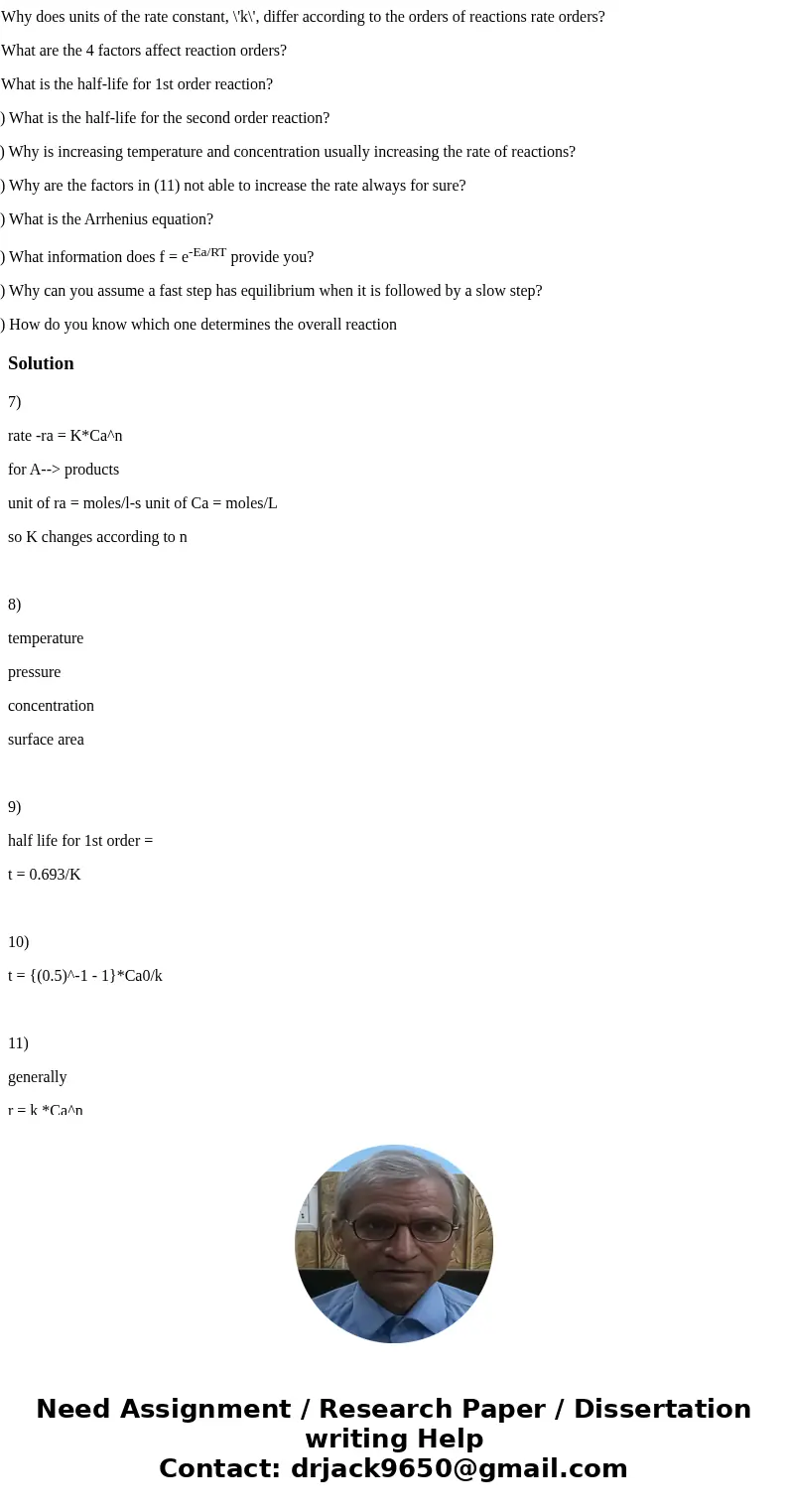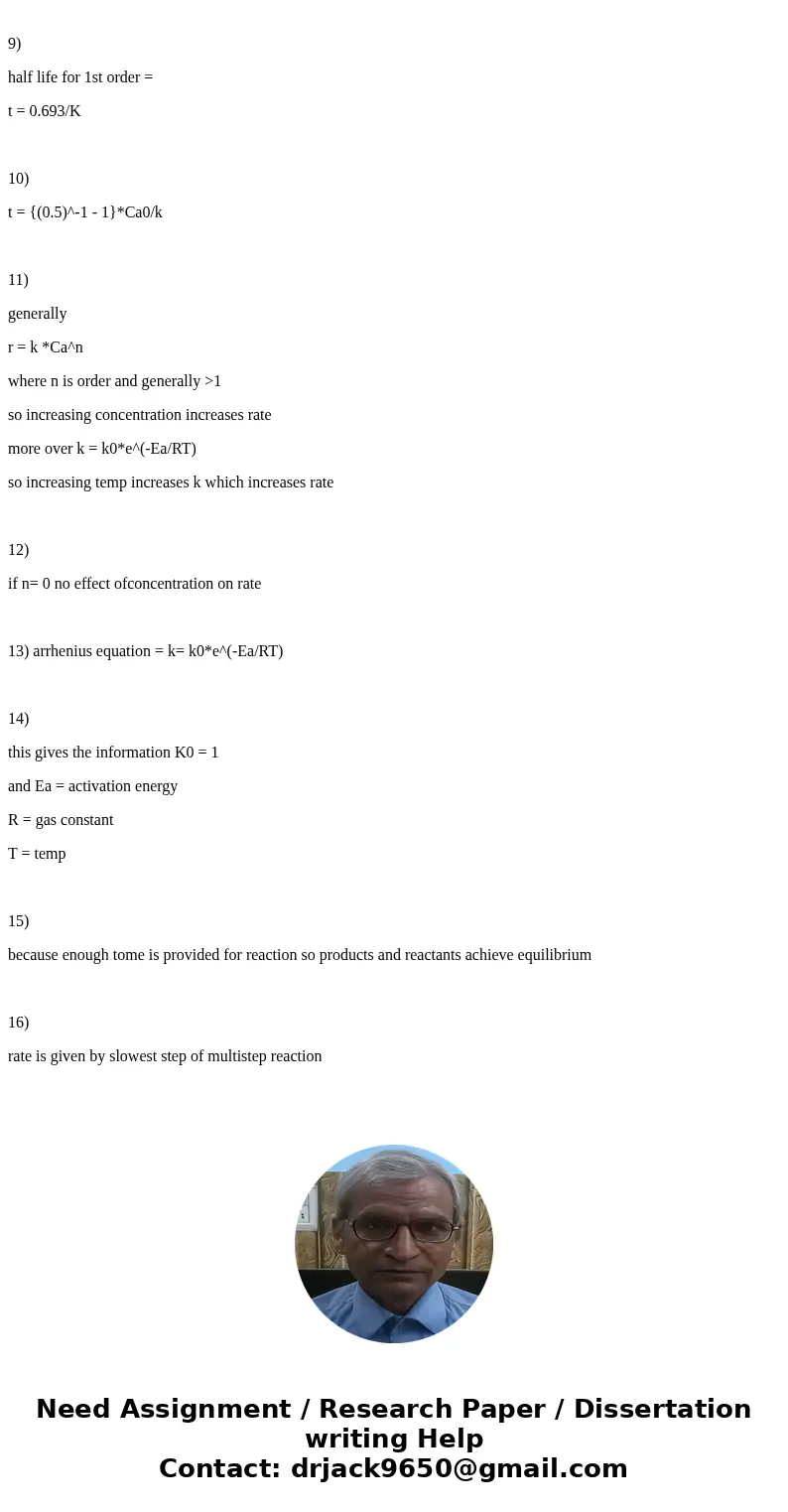7 Why does units of the rate constant k differ according to
7) Why does units of the rate constant, \'k\', differ according to the orders of reactions rate orders?
8) What are the 4 factors affect reaction orders?
9) What is the half-life for 1st order reaction?
10) What is the half-life for the second order reaction?
11) Why is increasing temperature and concentration usually increasing the rate of reactions?
12) Why are the factors in (11) not able to increase the rate always for sure?
13) What is the Arrhenius equation?
14) What information does f = e-Ea/RT provide you?
15) Why can you assume a fast step has equilibrium when it is followed by a slow step?
16) How do you know which one determines the overall reaction
Solution
7)
rate -ra = K*Ca^n
for A--> products
unit of ra = moles/l-s unit of Ca = moles/L
so K changes according to n
8)
temperature
pressure
concentration
surface area
9)
half life for 1st order =
t = 0.693/K
10)
t = {(0.5)^-1 - 1}*Ca0/k
11)
generally
r = k *Ca^n
where n is order and generally >1
so increasing concentration increases rate
more over k = k0*e^(-Ea/RT)
so increasing temp increases k which increases rate
12)
if n= 0 no effect ofconcentration on rate
13) arrhenius equation = k= k0*e^(-Ea/RT)
14)
this gives the information K0 = 1
and Ea = activation energy
R = gas constant
T = temp
15)
because enough tome is provided for reaction so products and reactants achieve equilibrium
16)
rate is given by slowest step of multistep reaction


 Homework Sourse
Homework Sourse